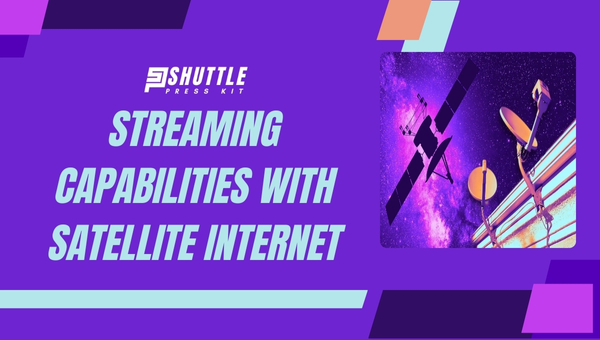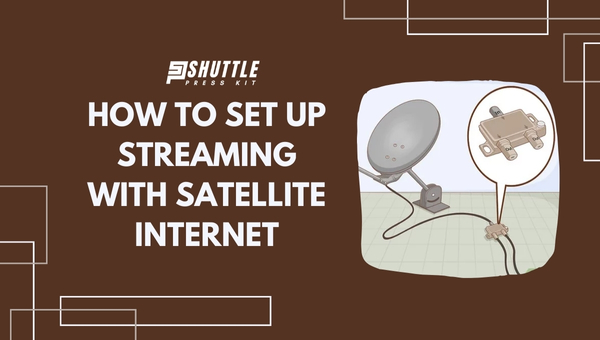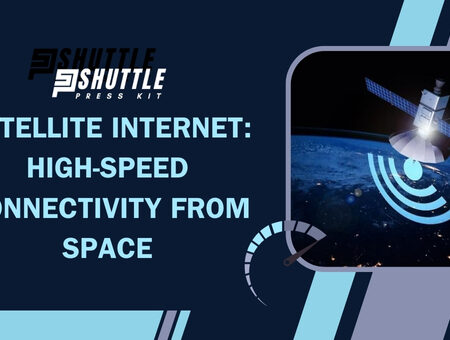Ever find yourself wishing you could stream your favorite shows without the endless buffering? If you’re nodding along, then my “Your Guide to Streaming with Satellite Internet” is exactly what you need. Let me show you how to turn those frustrating wait times into smooth, enjoyable viewing sessions.
To stream effectively using satellite internet, prioritize setting up a strong connection. This means placing your router in an open area, away from obstructions. Also, consider streaming during off-peak hours when fewer people are online.
This simple trick can significantly improve your streaming experience by reducing those annoying pauses for buffering.
Streaming Capabilities with Satellite Internet
Streaming on satellite internet is entirely feasible, debunking a common myth that it’s not suitable for such activities.
With the basic requirement for streaming standard definition (SD) content on one device being between 3 Mbps to 4 Mbps, satellite internet’s baseline speeds—which start at around 12 Mbps—adequately cover this requirement.
This ensures that users can enjoy their favorite shows and movies without significant issues. However, it’s crucial to delve into some of the nuances that come with using satellite internet for streaming.

Firstly, compared to other broadband types, satellite internet exhibits higher latency. This means there’s a longer delay in data transmission, which can affect real-time online activities but generally has minimal impact on streaming.
Secondly, the data caps on many satellite plans are something users need to be aware of; exceeding these limits could result in reduced speeds or additional charges—an important consideration for heavy streamers.
Lastly, while sufficient for standard needs, satellite connections may not reach the high speeds offered by cable or fiber options, potentially limiting ultra-high-definition (UHD) content accessibility or simultaneous streaming across multiple devices.
Also Read: Starlink Volcano Mount Guide: Easy DIY Installation Tips
How to Set Up Streaming with Satellite Internet
Setting up streaming with satellite internet can enhance your entertainment options, particularly in areas where traditional broadband services are not available.
Satellite internet has evolved, providing faster speeds that support streaming media content. Here’s a basic guideline on how to get started:

- Evaluate Your Internet Plan: Before anything, ensure your satellite internet plan supports streaming. Check for sufficient data allowances and speeds—ideally, you’ll want at least 3 Mbps for standard definition (SD) video and 25 Mbps for high definition (HD) or higher.
- Optimize Your Home Network: Position your router in a central location free from physical obstructions. Consider using Wi-Fi extenders if you have dead spots in your home.
- Select a Streaming Device: Choose a device compatible with your service—this could be a smart TV, streaming stick (like Roku, Amazon Fire Stick), gaming console, or even a smartphone/tablet.
- Sign Up for Streaming Services: Decide on which streaming platforms you’d like to use (e.g., Netflix, Hulu, Amazon Prime Video) and create accounts accordingly. Remember to keep an eye on each platform’s data consumption settings.
- Connect Your Device To The Internet: Follow the manufacturer’s instructions to connect your chosen device to your satellite internet connection.
- Adjust Stream Quality Settings: To conserve bandwidth and manage data usage effectively, consider setting the stream quality to a lower resolution when watching less visually detailed content.
By following these steps carefully, you can enjoy a seamless streaming experience even when relying on satellite internet as your primary service provider. Keep an eye on monthly data usage to avoid exceeding caps that could result in throttled speeds or extra charges.
Best Satellite Internet Providers for Streaming Services
When it comes to choosing the best satellite internet provider for streaming, both Viasat and Hughesnet present themselves as strong contenders, each with unique features that cater to different streaming needs.
For individuals who prioritize high-definition content and extensive streaming sessions, Viasat emerges as a superior option.
Offering plans that can reach up to 150 Mbps in certain areas, coupled with significantly larger data allowances – reaching up to 850GB before experiencing throttling – Viasat ensures users can enjoy their favorite shows and movies in 1080p without constant buffering or the fear of hitting data limits too quickly.

On the other hand, Hughesnet carves a niche for itself with its Bonus Zone feature. This thoughtful addition allows customers an extra allotment of 50 GB of data during the off-peak hours of 2:00 a.m. and 8:00 a.m., making it an ideal choice for users who don’t mind scheduling their downloads overnight
. With plans starting at speeds of 25 Mbps, which is higher than Viasat’s base offer but capped at lower overall limits (up to 200GB), Hughesnet positions itself as a cost-effective solution focused on delivering consistent service rather than peak performance.
Ultimately, the choice between Viasat and Hughesnet hinges on personal usage patterns and requirements from an internet service.
For avid streamers seeking uninterrupted access to high-quality streams without strict data limitations, Viasat holds a competitive edge. Conversely, budget-conscious users or those with modest streaming needs may find Hughesnet’s unique features more appealing, especially when leveraging off-peak hours can satisfy their entertainment desires equally well.
Optimal Streaming Services for Satellite Internet Users
For individuals relying on satellite internet, choosing the most suitable streaming service entails balancing content preferences with the inevitable constraints of bandwidth.
Given the common limitations associated with many satellite internet plans, such as data caps and lower speeds compared to traditional broadband, not all streaming platforms may offer an equally smooth viewing experience.
However, several services stand out for their adaptability and diverse content offerings that cater well to satellite internet users.
Netflix emerges as a top contender, given its broad spectrum of on-demand movies and shows alongside critically acclaimed original content.
With flexible subscription options starting from an accessible price point and the ability to adjust video quality to manage data usage effectively, Netflix is well-suited for those navigating the nuances of satellite connectivity. Similarly,
Amazon Prime Video offers a compelling choice by bundling an extensive library of movies and series with other Prime benefits at no extra cost, making it particularly attractive for existing Prime members optimizing for both value and entertainment without stressing their bandwidth limits.
While services like Hulu also provide a rich array of viewing options including live TV alternatives—meaning viewers can tailor their subscriptions based on preference and budget requirements—careful consideration should be given to service tiers in relation to potential data caps when selecting the best platform for enjoying seamless streaming over satellite internet.
Also Read: How to Reboot Your Starlink Internet? – Quick Fixes & Tips
FAQs
Can I stream movies and TV shows using satellite internet?
Yes, satellite internet supports streaming services, though you should monitor your data usage to avoid exceeding limits.
Will I experience buffering while streaming?
Buffering may occur due to the nature of satellite internet latency, especially during peak usage times or bad weather.
How can I improve my streaming experience on satellite internet?
Optimize streaming quality settings to a lower resolution to conserve data and reduce buffering.
Is it possible to stream live events using satellite internet?
Yes, live streaming is possible, but for a smoother experience, initiate the stream early and anticipate potential delays.
Also Read: Starlink Dimensions Simplified: Nail Your Satellite Setup
Conclusion
In the digital age where streaming has become an integral part of our daily entertainment and information intake, satellite internet has emerged as a pivotal player for those in remote and underserved areas.
Although it may present challenges, such as data caps and latency issues, innovative technologies and evolving satellite infrastructures are progressively enhancing user experience.
By selecting the right internet plan, optimizing streaming settings, and staying informed about the latest advancements in satellite technology, subscribers can enjoy a seamless and gratifying streaming experience.
In conclusion, satellite internet, with its expanding capabilities, is proving to be a viable solution for streaming enthusiasts outside the reach of traditional broadband services.
